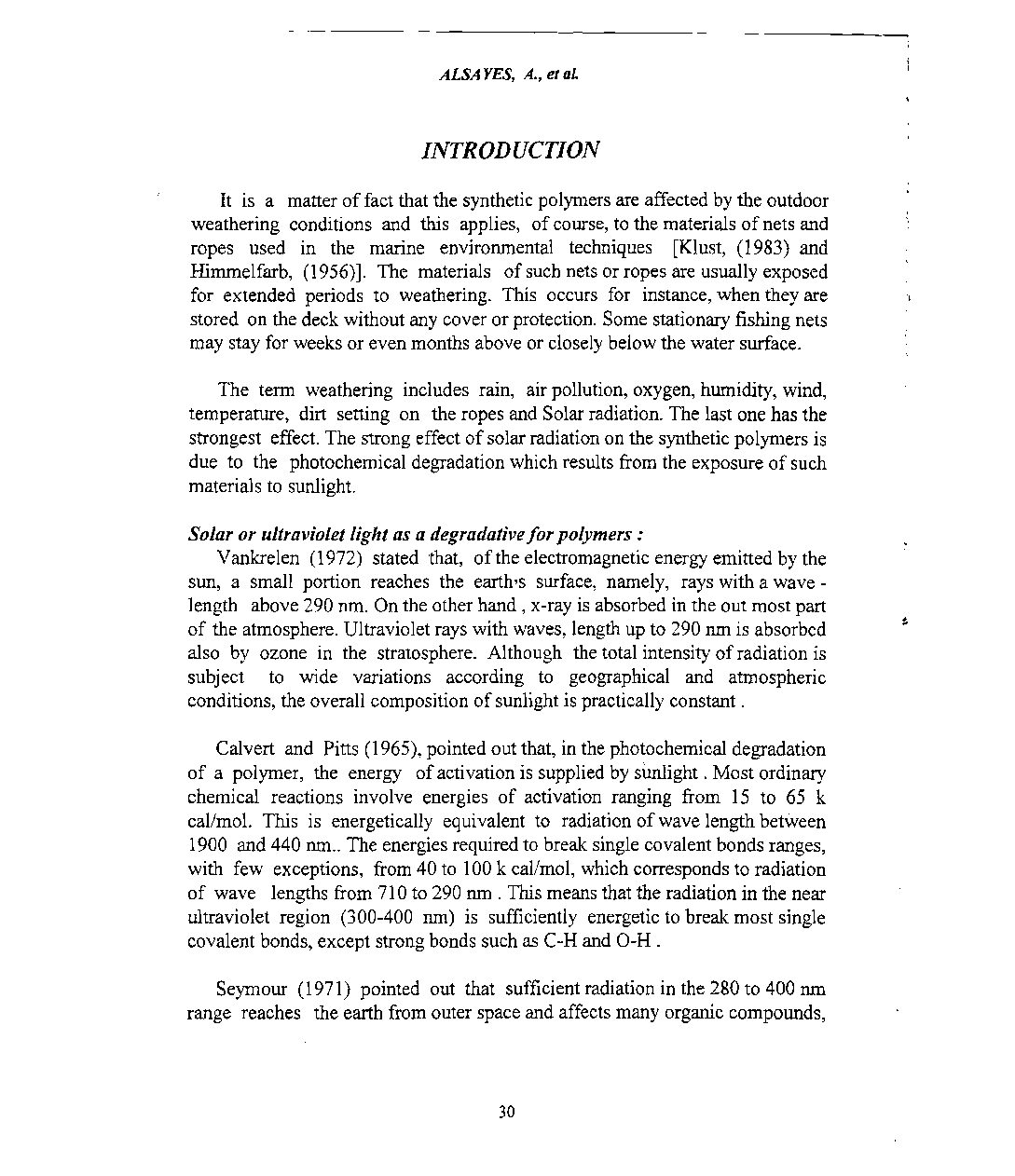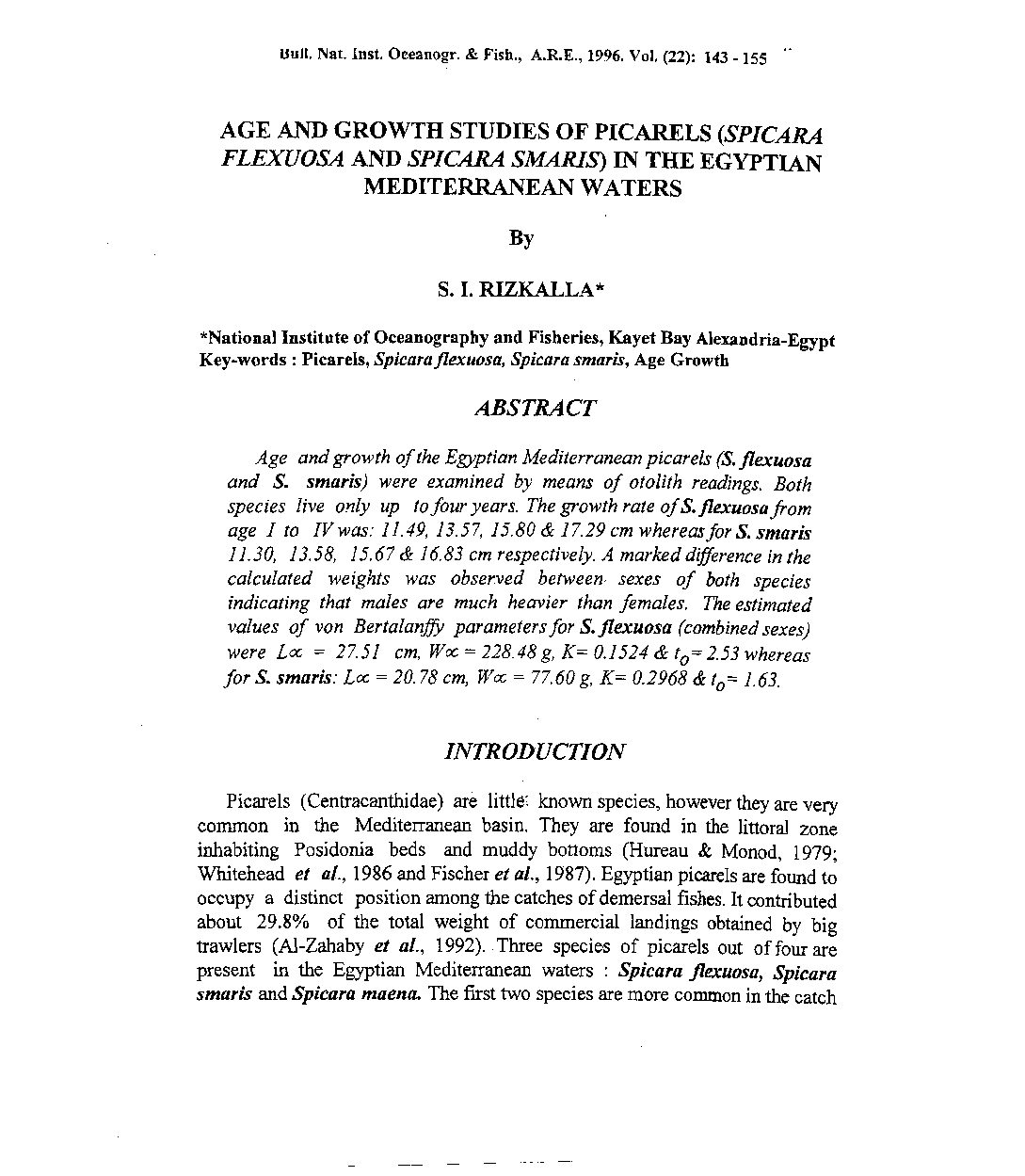Categories
vol-22EFFECT OF U. V. IRRADAITION ON POLYAMIDE FILAMENTSINTRODUCTION
It is a matter of fact that the synthetic polymers are affected by the outdoor
weathering conditions and this applies, of course, to the materials of nets and
ropes used in the marine environmental techniques [KIust, (1983) and
Himmelfarb, (1956)]. The materials of such nets or ropes are usually exposed
for extended periods to weathering. This occurs for instance, when they are
stored on the deck without any cover or protection. Some stationary fishing nets
may stay for weeks or even months above or closely below the water surface.
The term weathering includes rain, air pollution, oxygen, humidity, wind,
temperature, dirt setting on the ropes and Solar radiation. The last one has the
strongest effect. The strong effect of solar radiation on the synthetic polymers is
due to the photochemical degradation which results from the exposure of such
materials to sunlight.
Solar or ultraviolet light as a degradative for polymers:
Vankrelen (1972) stated that, of the electromagnetic energy emitted by the
sun, a small portion reaches the earth,s surface, namely, rays with a wavelength above 290 run. On the other hand, x-ray is absorbed in the out most part
of the atmosphere. Ultraviolet rays with waves, length up to 290 nm is absorbed
also by ozone in the stratosphere. Although the total intensity of radiation is
subject to wide variations according to geographical and atmospheric
conditions, the overall composition of sunlight is practically constant.
Calvert and Pitts (1965), pointed out that, in the photochemical degradation
of a polymer, the energy of activation is supplied by sunlight. Most ordinary
chemical reactions involve energies of activation ranging from 15 to 65 k
cal/mol. This is energetically equivalent to radiation of wave length between
1900 and 440 nm.. The energies required to break single covalent bonds ranges,
with few exceptions, from 40 to 100 k cal/mol, which corresponds to radiation
of wave lengths from 710 to 290 nm . This means that the radiation in the near
ultraviolet region (300-400 nm) is sufficiently energetic to break most single
covalent bonds, except strong bonds such as C-H and O-H .
Seymour (1971) pointed out that sufficient radiation in the 280 to 400 om
range reaches the earth from outer space and affects many organic compounds,







